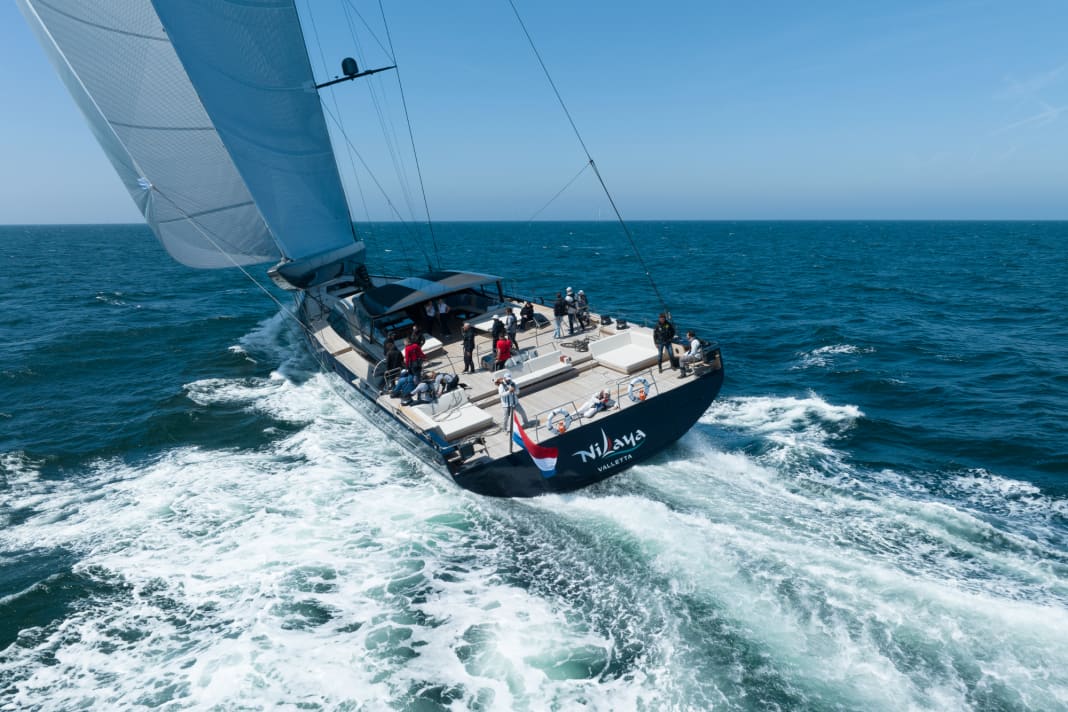





On 1 June, Royal Huisman handed over "Nilaya" to a couple of owners who are planning both long voyages and regatta participation with the 47-metre sloop. Prior to this, the sail systems were extensively tested, with Mario Pedol from Nauta Design also on board. The Milan-based company devised the general concept, the exterior design and the interior fittings. Pedol reports a day with 18 knots of wind:
"'Nilaya' is not good ... she is great! We quickly reached an impressive boat speed of 17 knots with a mainsail and code zero on the beam sheet"
Nigel Ingram from MCM Newport, who acted as project manager for the owners, confirms: "For such a large yacht, the acceleration is exciting and high speeds are reached quickly. The twin rudders and light steering ensure excellent manoeuvrability. 'Nilaya' has achieved all project goals with ease."
Royal Huisman calls the hybrid construction made of aluminium and carbon, which was tested for the first time on "Nilaya", "Featherlight" and is said to save a total of eleven percent in weight compared to a pure aluminium construction. The traditional shipyard already uses Alustar, a material that has a 20 percent higher tensile strength than conventional aluminium. In some structural areas, the additional rigidity of the components is not achieved by using more metal, but by bonding carbon mats to aluminium using the latest bonding techniques. Bonding is also used in other areas, for example to reduce the additional weight of connecting elements. In contrast, the 17.50 metre long body is made entirely of carbon fibre.
Digital prototyping as a design aid
Calculations based on the finite element method (FEA) were fundamental. This made it possible to predict how a part or an entire yacht would react to stresses such as load, force, heat or vibration. By looking at a part in three dimensions, it is also possible to predict how it will behave when the same loads act on neighbouring parts, so that potential weak points or vulnerable points can be identified and corrected in the design. In short: a kind of digital prototyping, only much more accurate and faster. Solutions can be applied without having to build and test new physical models. Royal Huisman used FEA for "Nilaya" to take the fine-tuning of the design to a "much higher level", according to Jim Pugh, who adjusted the panel thickness in the computer and predicted the longitudinal stiffness or deflection without even touching the first piece of material.
Jan Timmerman, CEO of Royal Huisman, found "Nilaya's" departure bittersweet: "We are always a little sad when one of our yachts leaves; it's a bit like a child leaving home. At the same time, we are proud to have delivered another unique vessel, especially one that pushes forward innovative design and manufacturing technologies. We wish the owners and everyone on board a good circumnavigation and many exciting regattas."
